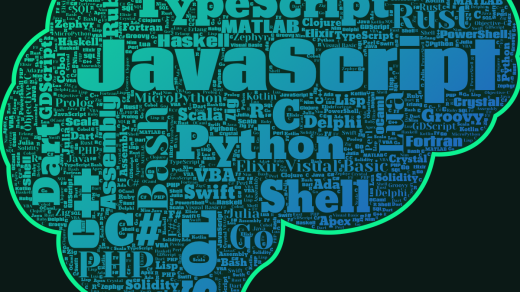The cultural link made between individualism and memory has been a consistent factor in the history of human thought. Seventeenth-century philosopher John Locke even hypothesised that our ability to hold unique memories was the very thing that made us individuals in the first place. In comparison to individualised memory, the emerging study of Collective Memory looks at the way in which humans construct and disseminate our memories in common; from everything to history textbooks and colloquial knowledge of past events. In our modern world of rapid and unforeseen interconnection, knowledge and content the phenomenon of a collective memory and experience has become a useful tool to comprehend our new mass understanding of the world. Like anything fostered by the digital, it has shown both positive and negative influence.
On one hand, there is the simple fact that an increasing amount of people learn from digital sources rather than physical ones. Whilst many people still engage with older forms of collective remembrance – such as books, films and shared discourse – the speedy switch to internet-based content like short-form videos and bite-sized articles have altered how we go about learning and discussing our pasts.

In an article summarising the state of collective memory in the digital, academics Yasseri, Gildersleve and David detail the recent efforts of a descendant of Holocaust survivors to modernise how his family’s pasts are recounted and kept relevant in the collective memory. Mati Kochavi, a wealthy Israeli businessman created a high-budget fake Instagram account @eva.stories, designed to mimic the diarised life of a real Hungarian Jewish girl named Eva Heyman during WWII. Costing five million dollars and with a cast and crew of four hundred, Kochavi’s project attempts to bring engagement and relevancy to the histories of the Holocaust in the digital age. Mainly using the popular ‘stories’ function on Instagram to document Eva’s life, the project went so far as to include simulated and re-enacted footage of Eva with her family and even of Nazi soldiers marching into Budapest.
Error: No feed found.
Please go to the Instagram Feed settings page to create a feed.
@eva.stories sparked intense debate amongst the international Jewish community, survivors, Holocaust activists and historians. Some stated outrage and offence at the creation of simulated characters to recount Holocaust histories, specifically for the victims and survivors. It’s not as if there’s a lack of real, primary accounts of the Holocaust’s atrocities. Take projects such as Steven Spielberg’s Shoah Foundation, which holds thousands of hours’ worth of interview footage with Jewish survivors of WWII, or even the famous diary of Anne Frank. So why then did Kochavi insist on spending exhaustive time and money on creating @eva.stories? Put simply, to keep knowledge of the Holocaust relevant in the new digital landscape of our collective memory, and to ensure these histories remain memorable within younger, digitised audiences.
The sense of anxiety that underlies many of our new encounters with digitized Collective Memory is its democratization. On one hand this freedom has produced positive outcomes like platforms such as Wikipedia where any internet user has access to vast quantities of knowledge. On the other, the very fact of free access to publication and information has meant a shedding of the usual checks and balances and the looming dangers of misinformation, or even the future danger of misremembrance. The recent rise of QAnon and Donald Trump, two phenomenons based on false narratives of the past and present, are already evidence enough of these ramifications.
Much of our digitized collective memory was foreseen by H.G Wells in his concept of the World Brain; a wish for a communal system of balanced knowledge for the whole of humankind. As aptly put by Wells:
“We do not want dictators, we do not want oligarchic parties or class rule, we want a…world…conscious of itself. To work our way to that World Brain…is therefore our primary need in this age of imperative construction.”
Pg.14 Preface from World Brain by H.G Wells, 1938
References
Anne Frank House. “The Complete Works of Anne Frank,” October 15, 2018. https://www.annefrank.org/en/anne-frank/diary/complete-works-anne-frank/.
Digital IO. “Eva.stories – Digital Dozen: Breakthroughs in Storytelling Awards,” n.d. https://digitaldozen.io/projects/eva-stories/.
Gordon-Roth, Jessica. “Locke on Personal Identity (Stanford Encyclopedia of Philosophy).” Stanford.edu, February 11, 2019. https://plato.stanford.edu/entries/locke-personal-identity/.
Kochavi, Mati. “Eva.stories.” www.instagram.com. Accessed October 9, 2023. https://www.instagram.com/eva.stories/#.
USC Shoah Foundation. “USC Shoah Foundation.” USC Shoah Foundation, n.d. https://sfi.usc.edu.
Wells, H.G. World Brain. Garden City, N.Y: Doubleday, 1938. https://archive.org/details/worldbrain00wells.
Yasseri, Taha, Patrick Gildersleve, and Lea David. “Collective Memory in the Digital Age.” Progress in Brain Research 274, no. 1 (2022): 203–26.



The juxtaposition of the digital and traditional sources of the collective memory you suggested is very interesting. I think the case study you chose shows the ambiguity of how those sources can be used. Mentioning the possibility of manipulation of reality through the means of new media shows the critical approach towards mass culture shaping the collective memory. This post is a good reminder to examine digital sources properly and be conscious about what and why we remember.